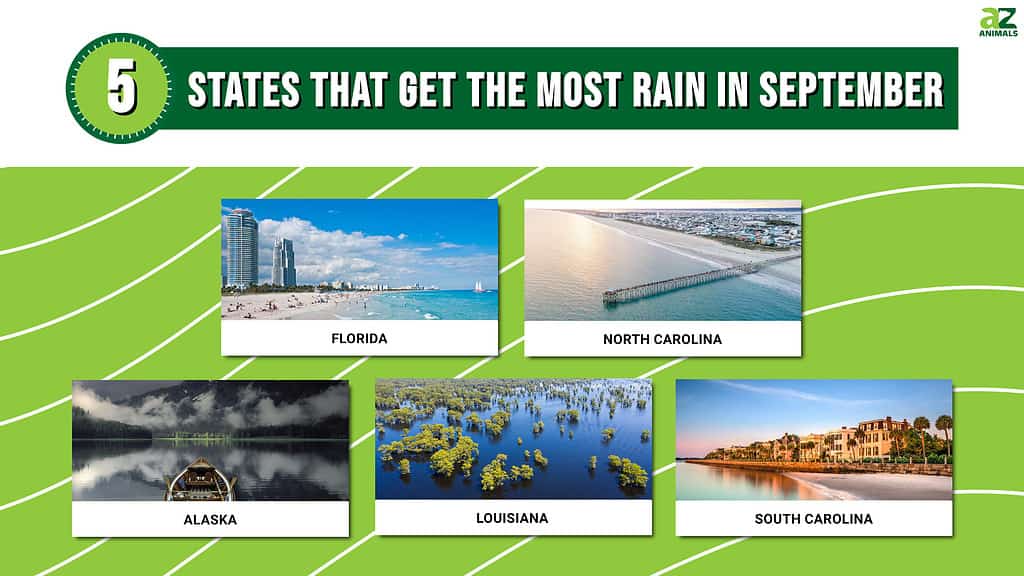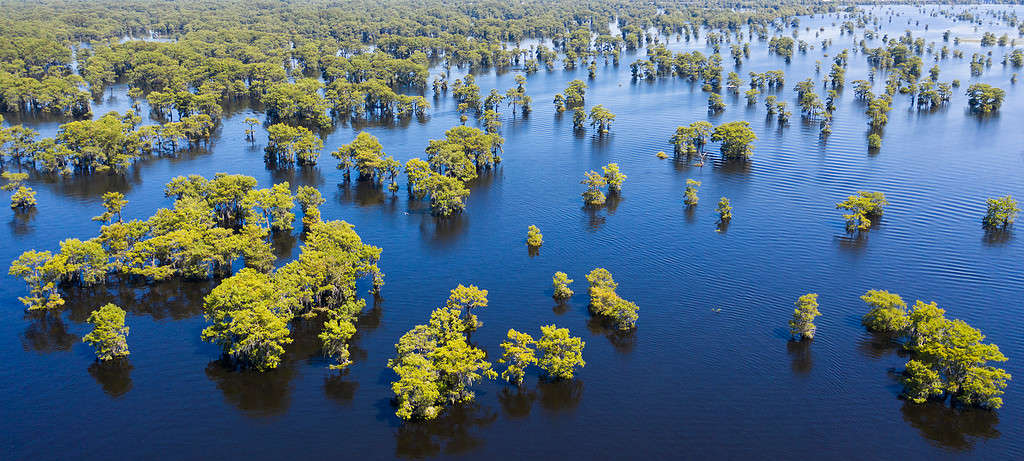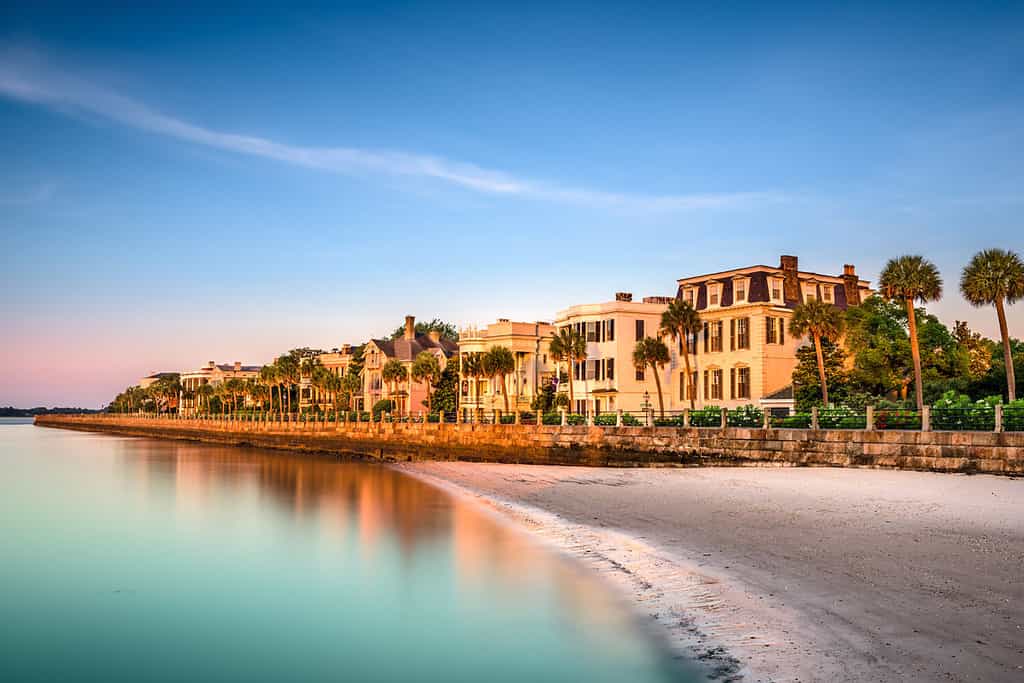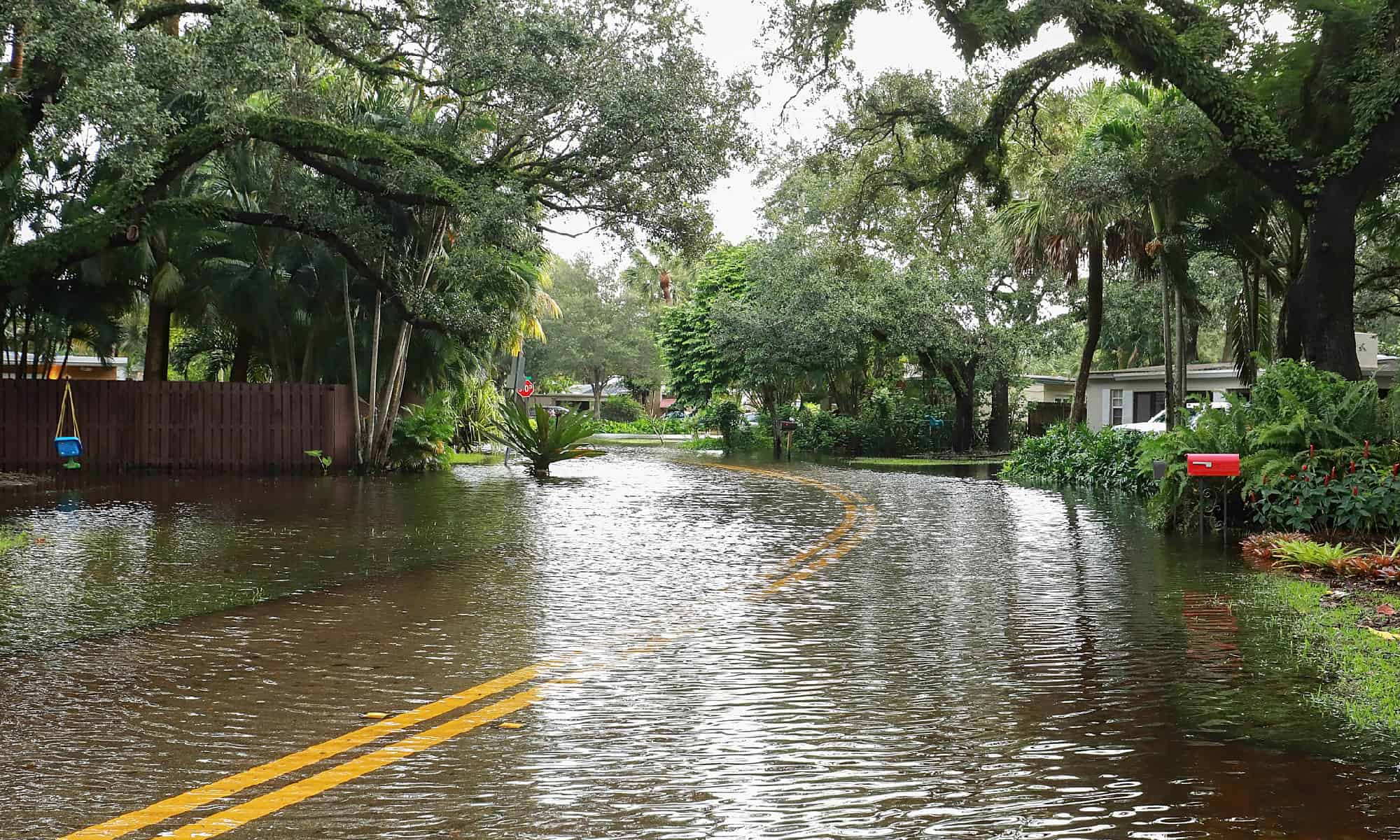September is the height of hurricane season in the United States, which, according to the National Oceanic and Atmospheric Administration (NOAA), runs from early June to late November. Some of the most destructive hurricanes in U.S. history occurred during the month of September, including Hurricane Maria in 2017 and Hurricane Ian in 2022. Atlantic hurricanes impact the Caribbean Sea, the Gulf of Mexico, and the Southeastern United States. Even without hurricanes, these areas typically see heavy rainfall in late summer and early fall.

This article explores the 5 U.S. states that get the most rain in September. While this list is mainly Southeastern states, it also includes one surprising state that is located far from the rest. Let’s explore climate trends and historic hurricanes in each of these states.
1. Florida

Since Florida’s massive coastline runs along the Atlantic Ocean and the Gulf of Mexico, it is prime hurricane territory.
©Alexander Demyanenko/Shutterstock.com
Florida, home to beautiful beaches and vast wetlands, is the fifth-wettest state in the U.S. overall. With an average of 6.5 inches, Florida also has the wettest September of any U.S. state. September is the end of the rainy season in Florida, which lasts the entire summer. The rainiest month in Florida varies by city, with June being the wettest month in Orlando and September being the wettest month in the Florida Keys. The average September rainfall in the Florida Keys is 7.24 inches. The rainiest place in Florida overall is Garcon Point, which averages 6.1 inches of rain in September.
Florida has been hit with some of its most devastating hurricanes in history during September. Hurricane Irma, which hit Florida in September 2017, is the eighth-costliest Atlantic hurricane in U.S. history. At the time, it was the fourth-costliest. Hurricane Irma caused 84 tragic deaths in Florida and 50 billion dollars of damage in the United States. Fort Pierce got 21.66 inches of rain from Hurricane Irma, compared to the September average of only 6.27 inches.
Another major September hurricane in Florida’s history is Hurricane Ian of 2022. Hurricane Ian is the third-costliest Atlantic hurricane in U.S. history after Hurricane Katrina and Hurricane Harvey. It caused 149 deaths and around 105.9 billion dollars of damage in Florida. An astounding 31.52 inches of rain fell on the small town of Ponce Inlet during Hurricane Ian. That’s more than 25 inches greater than the average September rainfall in Ponce Inlet, which is 6.27 inches.
2. North Carolina

Atlantic Beach, on the beautiful North Carolina coast, gets an average of 9.65 inches of rain in September
©Eifel Kreutz/iStock via Getty Images
North Carolina is the second-rainiest U.S. state in September, averaging 5.3 inches of rain. September is the end of the rainiest season in North Carolina, which begins in June. Coastal cities tend to see more September rain than inland cities. For example, the coastal city of Wilmington gets 8.69 inches of rain in September on average while the inland capital city of Raleigh gets 5.15 inches on average.
Several of the major hurricanes in North Carolina history happened during the month of September. While North Carolina does not see quite as many major hurricanes as states on the Gulf of Mexico, it has still seen many devastating storms. Hurricane Floyd of September 1999 caused widespread flooding, power outages, and 51 deaths in North Carolina. During Hurricane Floyd, Wilmington got the heaviest rainfall at 19.06 inches. The average September rainfall in Wilmington is 8.69 inches.
Additionally, Hurricane Florence, one of the costliest hurricanes in North Carolina’s history, happened in September of 2018. The storm caused extensive damage due to its slow motion across the Carolinas. According to the National Oceanic and Atmospheric Administration (NOAA), the total cost of damages from Hurricane Florence was 24 billion dollars. Elizabethtown recorded the highest rainfall in North Carolina during Hurricane Florence, at a whopping 35.93 inches. That’s almost 30 inches more than the average September rainfall in Elizabethtown, which is 6.89 inches.
3. Alaska

While Alaska is far from hurricane territory, it still gets heavy September rains.
©NancyS/Shutterstock.com
Alaska is the outlier of this list. Situated on the Pacific and Arctic Oceans over 2,600 miles northwest of Florida, Alaska is far beyond the reach of Atlantic hurricanes. However, Alaska still gets heavy fall rains, especially in the southeast. The state’s average rainfall in September is 5 inches, with some places seeing far more rain than that. For example, the average September rainfall in Juneau is 9.15 inches, and in Ketchikan is 14.3 inches. In September, Chenega, the rainiest place in Alaska, gets 16.6 inches of rain. Given these numbers, it’s no surprise that Alaska is one of the states that gets the most rain in September.
While Alaska is far from the reach of Atlantic hurricanes, in rare instances it is impacted by the remnants of Pacific hurricanes. According to the National Oceanic and Atmospheric Administration (NOAA), the Pacific hurricane season lasts from mid-May through late November. In September 2006, extratropical remnants of Hurricane Ioke, one of the most intense Pacific hurricanes in history, impacted southern Alaska. The storm’s remnants brought strong winds and heavy rainfall.
4. Louisiana

The Atchafalaya Basin in Louisiana is the largest swamp in the U.S.
©Sasha Craig/Shutterstock.com
Louisiana is known as the Bayou State because it is home to extensive swamps, river deltas, and other wetlands. It is tied with South Carolina for having the fourth-rainiest September of any U.S., averaging 4.5 inches of rain. Louisiana’s rainiest season is April through September, but the rest of the year still gets plenty of rain. The rainiest place in Louisiana is New Orleans, which gets 5.11 inches of rain in September on average.
Louisiana is on the Gulf of Mexico, where most of the major hurricanes in the United States hit. Several major hurricanes have hit Louisiana in September. For example, Hurricane Gustav and Hurricane Ike both hit Louisiana in September of 2008. Hurricane Ike was the strongest storm of the 2008 Atlantic hurricane season, which saw more frequent and more destructive storms than the average year. Hurricane Gustav hit just before Hurricane Ike, and brought major rainfall. The highest rainfall recorded in Louisiana from Hurricane Gustav was 19.17 inches at Barataria Bay Pass. That’s almost 13 more inches than the 6.2 inch average September rainfall on Grand Isle, which is located adjacent to Barataria Bay Pass.
5. South Carolina

Charleston, the most-populous city in South Carolina, gets an average of 5.25 inches of rain in September.
©Sean Pavone/Shutterstock.com
South Carolina is tied with Louisiana for having the fourth-rainiest September of any U.S. state, with a total of 4.5 inches on average. Coastal South Carolina gets heavier rainfall on average than inland areas, and summer is typically the wettest season. The rainiest place in South Carolina is the small town of Six Mile, which gets 4.8 inches of rain on average in September.
Some of the most devastating hurricanes in South Carolina’s history were during September. Hurricane Floyd of 1999 and Hurricane Florence of 2018, both covered in the North Carolina section, also had major impacts in South Carolina. Additionally, Hurricane Hugo of September 1989 was the costliest hurricane in United States history at the time and caused extensive damage in South Carolina.
Each of these major hurricanes brought extremely heavy rainfall to South Carolina. Hurricane Floyd brought 16.06 inches of rainfall to Myrtle Beach, which has an average September rainfall of 6.77 inches. Additionally, the highest rainfall recorded in South Carolina from Hurricane Florence was 23.63 inches in the small town of Loris. That’s a whopping 18 more inches than the average September rainfall in Loris of 5.63 inches! Finally, the highest rainfall from Hurricane Hugo in South Carolina was 10.28 inches in Edisto Island. The average September rainfall on Edisto Island is 5.35 inches.
Summary of the 5 States That Get the Most Rain in September
| Rank | State | September Rainfall in Inches |
|---|---|---|
| 1 | Florida | 6.5 |
| 2 | North Carolina | 5.3 |
| 3 | Alaska | 5.0 |
| 4 | Louisiana | 4.5 |
| 5 | South Carolina | 4.5 |
Thank you for reading! Have some feedback for us? Contact the AZ Animals editorial team.








